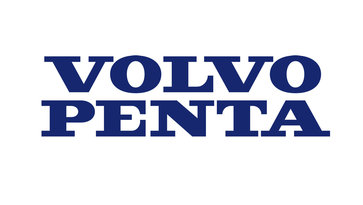Volvo Penta India, a part of $ 1.5 billion Volvo Penta Group, has renewed its focus on the fast-growing off-highway vehicles engine business. It is currently producing 5 and 8-liter engines, all Bharat Stage-IV emissions standard compliant, at its industrial engine manufacturing facility in Pithampur, Madhya Pradesh.
Miron Thoms, Vice President and Head of Volvo Penta India shared plans of double-digit growth in India by leveraging the exponential potential of the domestic construction equipment vehicle (CEV) segment. Edited excerpts:

Q. What is the current capacity of Pithampur facility and how is it supporting your growth vision?
Currently, the production capacity of our plant is 100,000 units per year that are designed to meet both Indian and export commitments. Here, we are manufacturing D5 and D8 (five and eight-litre) engines, the majority of which get exported.
This is one of the most modern engines producing plants in the country which helps us offer a European designed product manufactured locally to meet our Indian customer’s demands. For the Indian market, we are aiming for double-digit growth for Volvo Penta in the coming years.
Q. Where do you see maximum growth coming from the off-highway segment in India?
I believe the construction segment in India has massive growth potential and there we would like to expand our footprint. Even though this year has seen lots of headwinds like slowdown in the economy due and liquidity crisis, we are still hoping this specific segment will bounce back to growth as the country increase it spends on infrastructure and other social sectors.
Q. In December 2019, your company tied up with Doosan Bobcat for the air compressor business. Can we see this as part of your expansion plan in the construction equipment segment?
The air compressor segment is, of course, the heart of the construction equipment sector. We entered as an engine supplier for the air compressor segment in India with Doosan Bobcat last year. The idea is to provide benefits to the operators of the compressor segment in terms of operating cost, fuel consumption offering much better productivity.
This will help us expand the Indian market and we hope other manufacturers’ to venture into this new segment. Right now we are also in discussion with all the major air compressor manufacturers globally, besides the India players.
Q. From October 2020 new emission norms are coming up for the construction equipment sector. What’s your readiness for this regulation?
In the CEV BS-IV needs, we already have prototypes running with our Indian customers. Today our customer will be able to do both the BS-IV CEV and BS-V CEV and meet the upcoming emission regulations in their R&D phase. In the next 12 months, we have a slew of new customers who will launch their products with the implementation of CEV BS-IV norms that will complement our growth ambition in India.
Q. How many CEV BS-IV norms compliant engines you plan to offer?
We will offer a total of five engine options under the new emission norms. As the majority of engine requirements in the construction equipment segment in India are in the 5m to 8m range, our locally manufactured D5 and D8 base engines will be able to cater to it. Besides, we have 11-liter, 13-liter, and 16-liter engines that are made in Europe and are fed via imports to the domestic market.
Q. Do you think your current facility is enough to meet your requirements or are you plan any brownfield expansion in the near term?
The construction equipment segment in India is big, but in terms of numbers and the power range, it is not diversified or huge. The maximum requirement we are receiving is for 100 KW to 235 Kw power output, for which our present D5 and D8 engines are enough.
There is no requirement to increase the capacity of the factory anytime soon but we can consider spreading our engine portfolio further locally only if the demand spikes in the future.
Q. What advancements are you planning to offer with your engine technologies?
Our core engine development technologies are always on low fuel consumption. Now that new emission regulations are becoming stringent in India, we are introducing after treatment concepts for all of our engine options which are easy to maintain and operate for our customers. This will help the end-user from better connectivity and lowering their cost of ownership.
Source: https://auto.economictimes.indiatimes.com/


